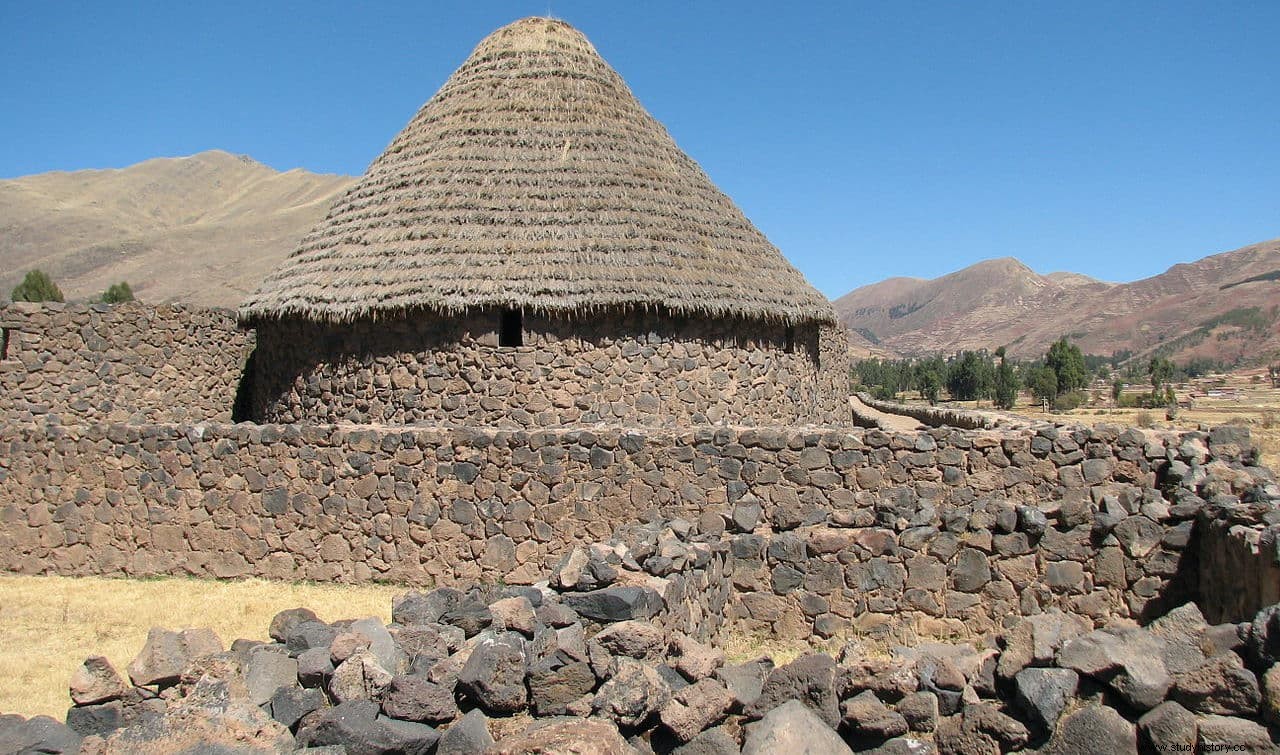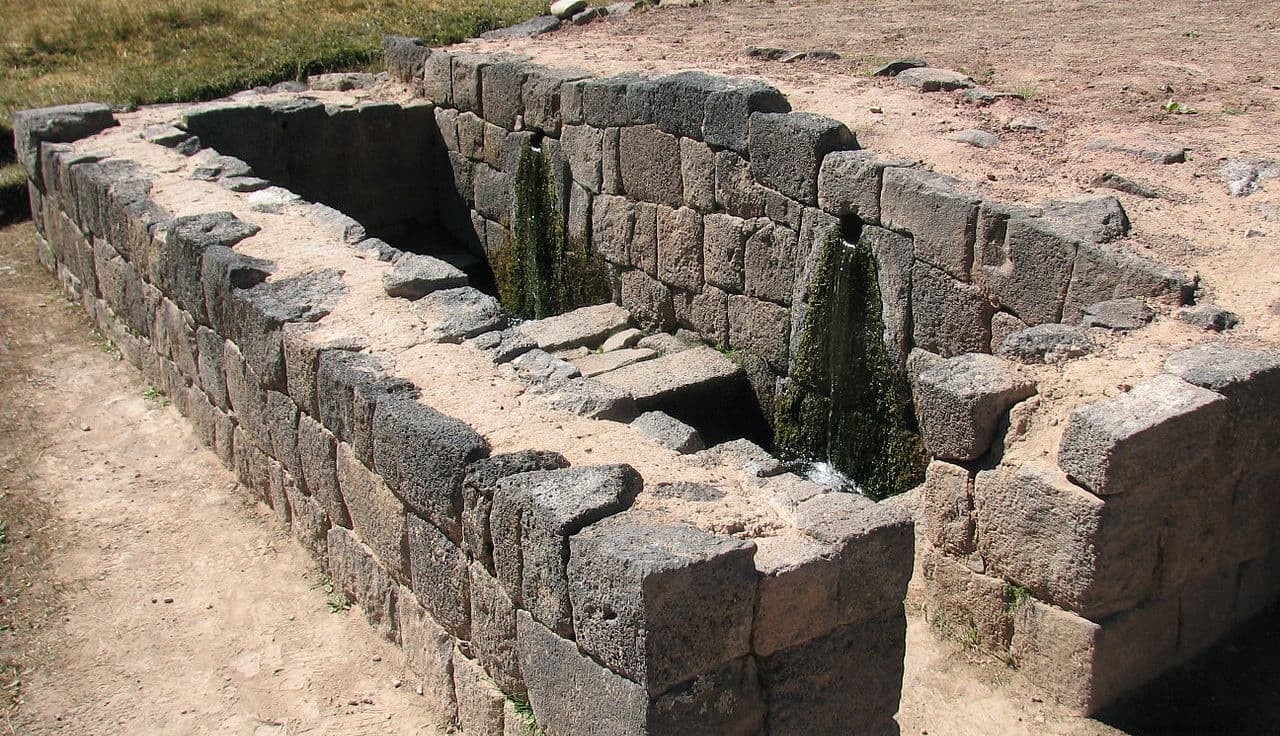Viracocha was the most important divinity of the pre-Hispanic Andean religion and, although he constituted a superior hierarchy along with Inti, Illapa and Punchao, the Spanish missionaries focused their references on him when evangelizing the indigenous people in the idea of a single god. .
The main representation of Viracocha is in Tihuanaco (Bolivia), in the famous Puerta del Sol, but his sanctuary par excellence was that of Racchi, today a spectacular archaeological complex that for some time now is becoming one of the biggest attractions from Peru.
Racchi is located in the province of Canchis, one of the thirteen that make up the department of Cuzco, some 119 kilometers southeast of its capital, which explains why it has been incorporated - timidly so far - into the circuits of the area:the Tourist Ticket, which among other sites includes Cuzco city, Sacsayhuaman, Coricancha, Pisac and Ollantaytambo, also allows access to Racchi; After all, it is in the South Valley, very close to the Piquillacta ruins and is part of the Qhapac Ñan or Inca Trail. As in all of them, the climate is temperate, marked by the altitude of 3,550 meters, and it opens from Monday to Sunday from 7:00 to 18:00.

It extends over almost 11 square kilometers of a hillside and consists of a series of stone and adobe architectural constructions distributed by sectors that had specific functions (administrative, religious, military...) and surrounded by a perimeter wall (whose length reaches four kilometers and was equipped with a moat), except for a drum exterior (warehouse-shelter) made up of eight buildings and a set of another 220, with a circular floor plan, which were surely warehouses. Also, in the surroundings there are irrigation terraces and a spring with baths for religious use.

According to the Inca Garcilaso, Racchi began to rise at the beginning of the fifteenth century, in the time of the Inca Viracocha, a leader who was the eighth ruler of Cuzco but whose historicity is confused with the myth. Originally called Hatun Tópac, he changed his name after having a dream with the god, perhaps to strengthen his position as he was not the son of the previous Inca, Yahuar Huácac (although he did belong to his dynasty).
Viracocha was able to resist the conquest attempts of neighboring peoples such as the Ayamarcas and Guayamarcas, but not the Chancas, who managed to overthrow him and cause his exile. He left behind an intense construction work that included the site in question.
This, explains Cieza de León, was expanded by successors such as Pachacútec (between 1439 and 1471) and Túpac Yupanqui (between 1471 and 1493), with Huayna Cápac giving it its final appearance. However, the archaeological excavations carried out in situ They brought to light ceramic remains that reveal that Racchi was occupied much earlier by other cultures. This is the case of the Marcavalle, the Pucará and the Huari, who also worshiped Viracocha and inhabited the banks of the Vilcanota River many centuries ago, reaching the chronological spectrum up to a millennium before Christ.
In any case, the structures that we see today are Inca and, in fact, the aforementioned Temple of Viracocha has the singularity of being the one that had the largest gabled roof of the Tahuantisuyo (the Inca empire), since that of the Bolivian complex of Incallajta is bigger but of another type. With a rectangular floor plan and two stories high, it measured 92 meters long by 25.5 meters wide and 15 meters high. The constructions of these characteristics are called kallancas and are typical of the period immediately prior to the arrival of the Spanish.

Its central wall, which supported the peak of the aforementioned roof and is the only thing that remains of the building, was made of adobe with a base of andesite (a volcanic rock, since the Kinsach'ata volcano dominates the contours) and the rest of the The walls had several doors and windows, while lines of columns flanked their sides. All these elements, combined with a series of interior pillars, indicate that the route through the building was made in a zigzag pattern, something probably related to the cosmological concepts linked to Viracocha.
In the northern part of the temple are the remains of a dozen dwellings for priests and officials. There are also a hundred and a half colcas ie warehouses. They have a circular floor plan, 10 meters in diameter and a conical vegetal roof and were used to store agricultural products such as corn, quinoa, potatoes and chuño (the name given to the freeze-dried tubers for their preservation), as well as dried meat and fish. All this was not for normal consumption but for ceremonial use - it was divided among his – and shared space with other things that were also stored there (fabrics, ceramics, weapons…).

We said before that a spring was located nearby. Through two sources he fed a qucha or artificial lake, equipped with a raised platform that rose to the side. It also had a ritual function, as seems to be shown by the discovery of a layer of ashes that was probably due to the sacrifice of camelids. The set was completed with some bathrooms and an esplanade that today is used as a farm field but that in the past was surely a fairground to welcome people in religious festivities. It should be added that the mythical origin of the K'ana people, which appears in the legend of Viracocha, was located in that area of the spring.
It was said that Viracocha arrived in the region of Charcas, where he was attacked when no one recognized him. Irritated, he rained down fire from heaven until the people ran to ask his forgiveness. Then he revealed his identity to them and they erected a sanctuary for him, which was the one that the Incas later expanded.
It must be taken into account that Viracocha was closely related to water, since it would have caused a great flood that covered the Earth and when the waters receded, it settled in the lake that remained as the last remnant, Titicaca, where it gave birth to the human race. . It was not really a unified myth and there are multiple versions.

To all that has been described, we must add the Aucca Huasi, which some identify with a prison; the Ccumo Ccacca or necropolis; and the Qhapac Ñan, the royal road that passed through there and whose chasquis (messengers) could rest there. The section of said road as it passes through the neighboring town of San Pedro de Cacha is occupied by a beautiful 18th-century church, built of stone and adobe, decorated with paintings from the Cuzqueña School. On the third Sunday of June, this town hosts the celebration of the Racchi Festival, listed as Cultural Heritage of the Nation.
